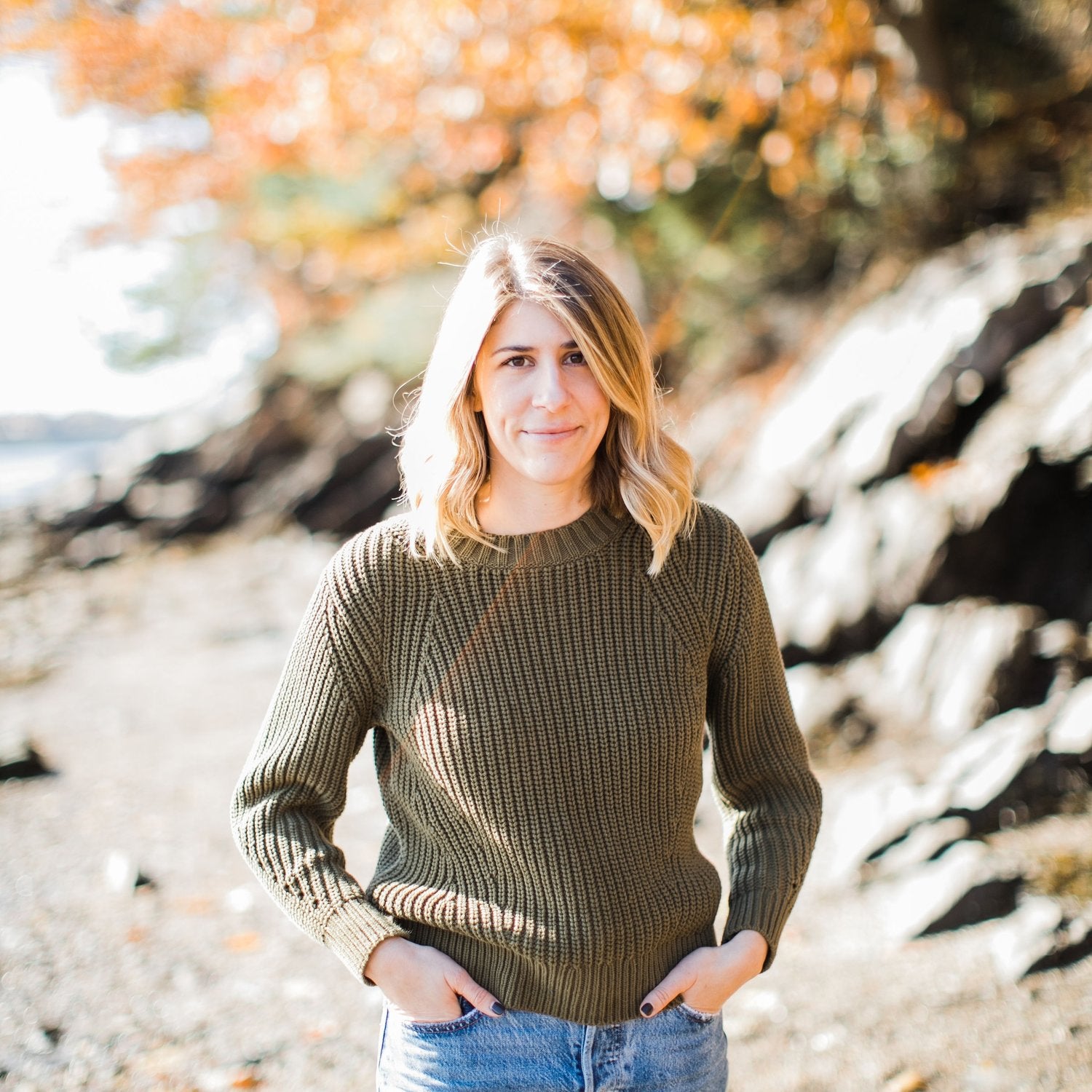The 50 States Project is a yearlong series of candid conversations with interior designers across the country about how they’ve built their businesses. This week, Portland, Maine–based designer Heidi Lachapelle tells us how her relationship with her co-founder (and sister-in-law) has been key to her success, how networking helped her connect with the local design community, and how the changing Maine market is impacting her business.
What are your early memories of being drawn to design?
My interest in art in general started at a very young age. I distinctly remember [writing an autobiography as an assignment] in sixth grade, and on the “future” page, I said I wanted to be a fashion designer—I had already determined that I was going in some sort of design direction. Throughout high school and college, art was always an area that I felt confident in and excelled in and that brought me joy. I have a studio art degree—I was classically trained in painting and drawing, and then I started to explore site-specific installation in my thesis and carried that beyond after college. Looking back, I was always working towards this, though I didn’t realize it until later.
After college, I started working with Anthropologie, doing their displays and windows and merchandising. I started in New York in the Rockefeller Center store, then moved to Montreal and opened up the new market there. That’s where my husband is from, and they needed somebody that could speak French and English—I was the bridge to help open that market up. Then I moved to Chicago and oversaw some stores in the Midwest, but it was always merchandising-focused; I opened new stores across the country as a design lead. So, I was essentially working within a budget, doing interior design.
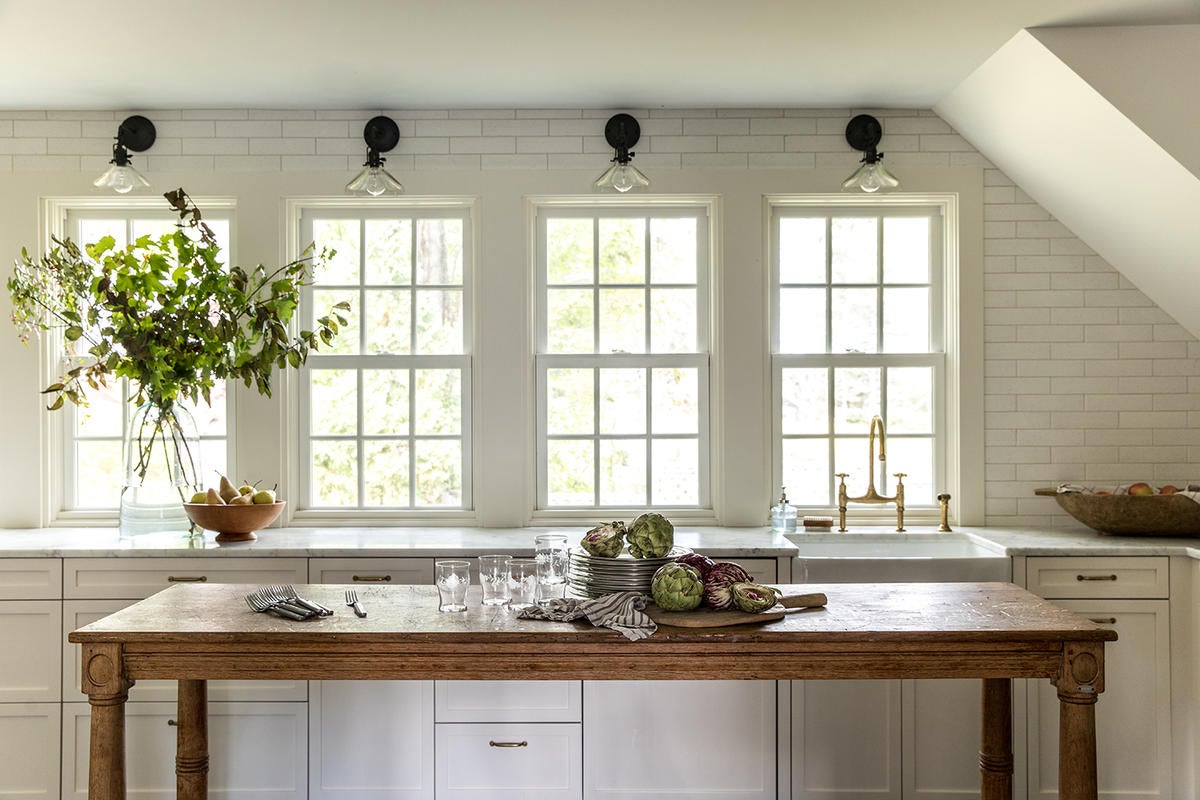
But in a window!
And also setting up the floor plan for the entire store and customer experience. It was a merging of all of the things that I really loved. I became passionate about applying my artistic skills to this residential setting, making this narrative moment for customers at Anthropologie and then, in turn, for my own clients. My mom was always very “of the home” growing up—she would antique all the time, and she always made home a special place. That was a really big part of my upbringing, so it’s always been important for me.
I had this art background, then I got into the merchandising display world, and then it really catapulted my career into interior design. It was this long and winding path to get there, but [since] I made that decision, I haven’t looked back.
When did you found the firm, and what made you take that leap?
My daughter was born in 2017. I had been feeling restless with work and just craving more. I had made the decision to move from Chicago with the company back to Maine, which was a smaller store, less responsibility. I wasn’t overseeing the same level of stores that I had before, but I had this very strong desire to be back in my home state. So I came back here, I had my daughter and was on my maternity leave, and I thought: “Now is a good time to start my company.” I gave birth to her in February 2017, and I started the company in April 2017. That gave me the space to feel confident enough to do it, and she just made me really passionate about doing something I was proud of.
What were the early days of the firm like?
I founded the firm with my sister-in-law [Katie Judkins]. We went to college together, and she’s my partner in crime. I had worked in the visual end of retail, and she worked at the corporate level of retail, doing merchandising for L.L. Bean. I was the creative end of things, and she was the operations end of things, so we worked really nicely together.
In those early days, we were just trying to meet as many people as we possibly could—developers, real estate agents. [We’d] walk into stores and introduce ourselves. It was just a way of getting our name out there and saying, “Hey, this is what we’re doing. This is what we’re passionate about. Know about it.” In hindsight, it’s a little cringey thinking about all those meetings. People were so kind and welcoming and supportive, and I think our passion resonated, and it was authentic. I think that was great footing for us to start off on, especially in Maine—the community is small, and everyone knows everyone.
We had our first client in June 2017, and she is still a client to this day. She really trusted us and believed in us and let us run wild with our vision, and that started things. From there, it’s really grown organically.
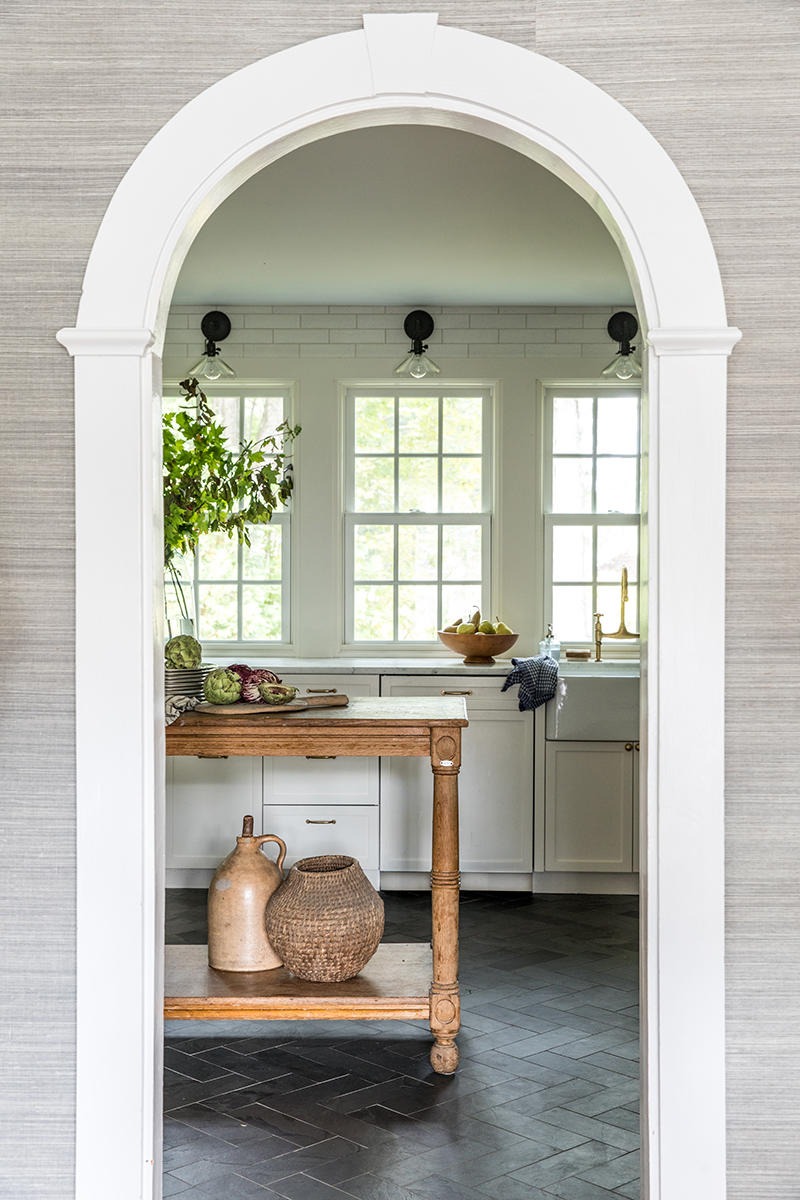
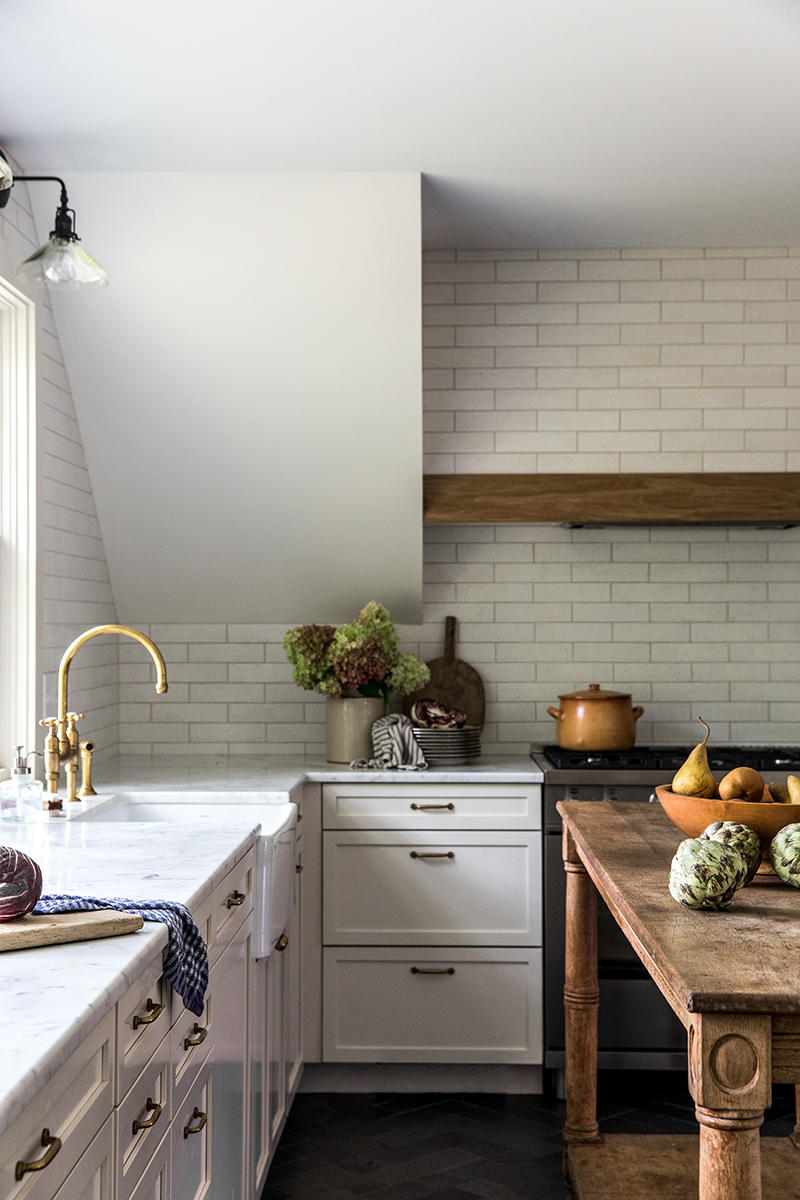
Did that first client come from one of those early meetings?
Indirectly, yes. We were meeting with a bunch of other creative types, photographers, stylists, things like that. One of the photographers that we met with [is] a wedding photographer, and she referred us to this particular client.
That’s amazing. So, all the networking really did pay off?
It did.
You said the work grew organically. What does it look like today?
We were working initially on a lot of existing homes. I would equate it with the true definition of decoration, whereas now we have really transitioned to interior design: full interior design packages, working very closely with architects on the interior architecture, as well—sort of the full vision from the doorjamb to the pillow on the couch.
That has been a really exciting and creatively challenging experience. Right now, we have 10 projects, and I would say 75 to 80 percent of them are new builds [where we’re] working very closely with an architect from the ground up. We have a very large-scale residential project that has four homes.
Wow, that’s a compound.
Yes, exactly. They built the main home for them and then three houses for their three children, which is incredible. Mostly, we are in Maine, but we also have a project in Michigan: a new build [with an] architect [who’s headquartered] in Maine, so that’s been a fun project. We have a few projects in New Hampshire, as well, but it’s mostly been in our Maine bubble, which is great. We work in all different parts of the state—two hours north of Portland and two hours south of Portland, so we really go everywhere.
How do you make that transition from decorating to interior design?
I think that there are always these serendipitous moments in one’s career. We got a job organically that introduced us to the architect; the architects were happy with our work there, so they referred us to another project, where we had a little bit more responsibility over the interior architecture. We now often have creative control over the environment that we were working with, rather than shifting and adjusting to the current condition.
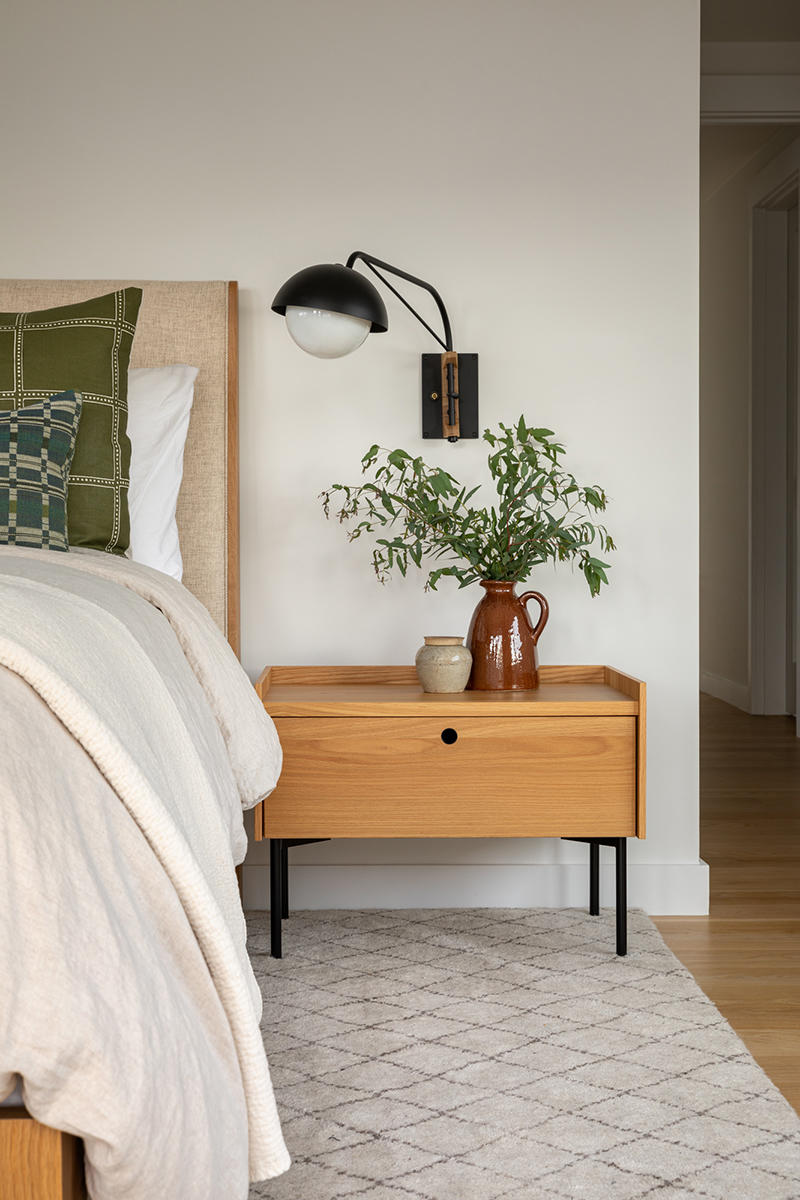
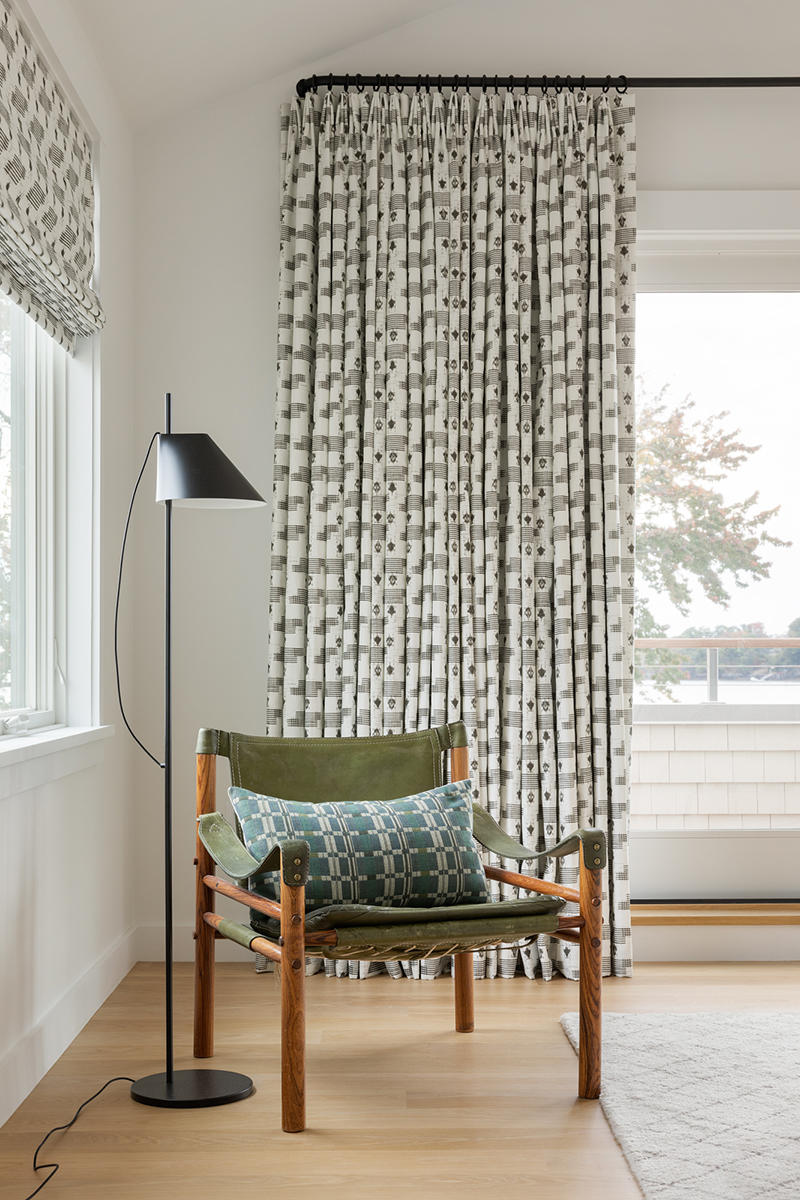
What kind of team do you have?
There are six of us, including me and Katie. ... We are all mothers of young children, just to add to the crazy. I work seven days a week in some capacity, but I am in the office four days a week, and I have Friday with my two girls. The women that work with us have similar schedules where things are really flexible and they’re not working 60 hours a week—it’s more like six people working 30 hours a week and all coming together to use our skills.
Did you build it that way on purpose?
Katie and I would be messaging each other while we were at our corporate jobs being like, “There’s got to be something more for someone who wants to be a mother and is still passionate about working at a really high level.” We felt like we had to find something that is designed this way, because we were just not seeing that white space available in the corporate tracks that we were in. It was all or nothing.
For us, life just didn’t work that way. We wanted to provide high-level work for women that needed this flexibility, and we were able to pay. We consider our pay to be [at the level of] a full-time position, rather than taking something that’s halfhearted and maybe not what you want to do, at a lower rate. So, yes, we were always really passionate about forging our own path and creating that for other people, as well.
How did you troubleshoot making that work?
I think it’s really trusting the people that you hire and making sure that we’re all on the same page. We’ve been so lucky in that sense. I think it’s working now because we’re all in the same life stage, we all have kids that are 5 and under. Especially this past year with the pandemic—if my kid needs to quarantine for 14 days, what can you do about it? We’re all able to pick up each other’s work in a way that is really thoughtful and has worked for us.
As you grew the team, how did you strategize what to hire for?
Because Katie and I don’t have traditional training in interior design, we wanted to outsource. What are the skills we have? What are the skills that we need? Then that’s going to give us the answer for what type of skills we need to hire for. We are very clear about what our strengths and weaknesses are, so that was how we determined what we needed to hire out. As we started doing these higher-profile jobs, we were seeing the need for someone to draw up construction documentation, so that’s what we sought out. [That allowed me] to design for those cruise directives, [as] I call it, and they were able to do that technical documentation.
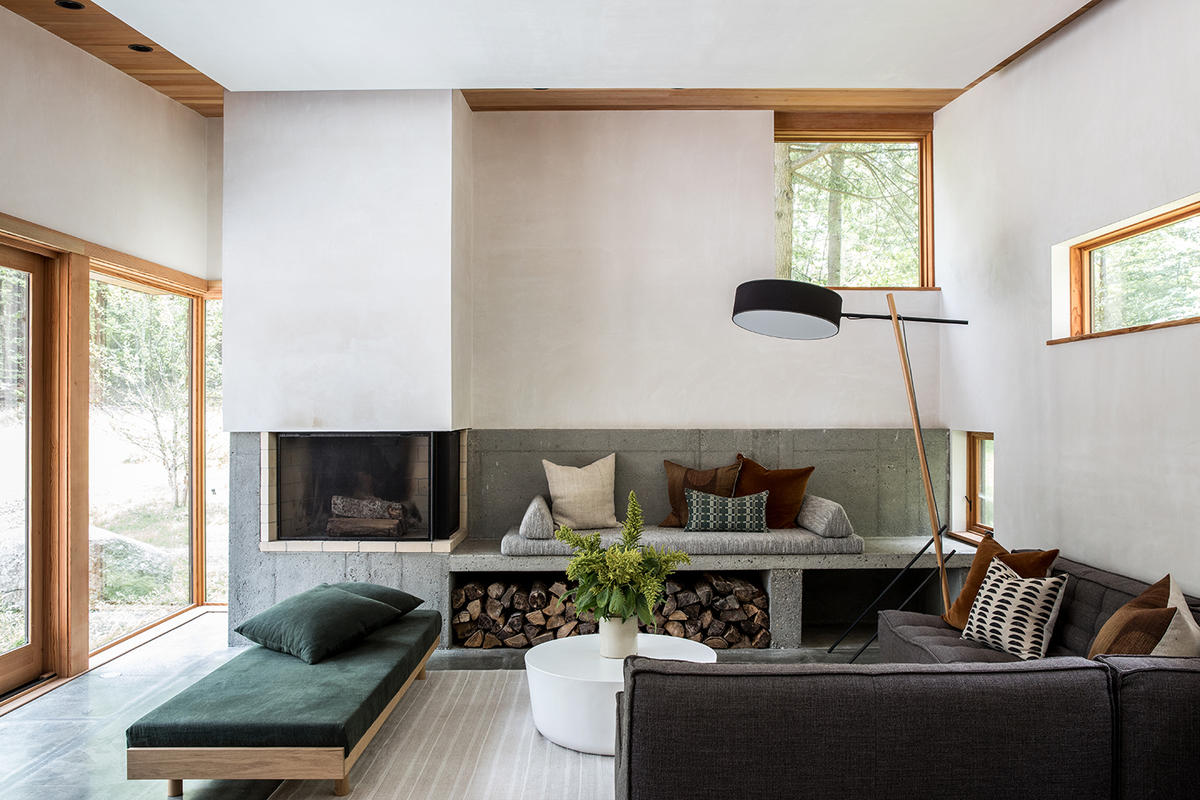
How do you see your role in the firm today? I like the idea of being a cruise director—that’s a great phrase for it.
I have a very heavy hand in every single project that we do—all of the global direction stems from me, and then our team carries that out. Obviously, there’s flexibility in that, but that initial global look of how we want this project to feel definitely comes from me. Then it’s completely collaborative. With that initial idea, our team is able to bring other things to the table that help elevate that. That’s what’s really amazing about working with a team. I can only take things to a certain level in my mind, and you need these other voices involved that make it even better.
How big would you want the firm to grow?
It’s something we wrestle with all the time. I love being involved and knowing exactly what spec goes where when I walk into the house. I like knowing all those things in a really intimate way, and it’s grounding for me—it helps with my anxiety.
I can totally relate to that.
Some might call that being a control freak, but I think it just provides a level of comfort—I have been investing my whole life into this business. We’ve turned down so many jobs this year, and everyone in this industry has been so inundated. We just turned seven jobs down in the past month that we would have been so excited to take a year or two ago, but it’s not the level that we are working at now.
There’s always this push and pull of, “Do we hire more? Do we get bigger?” This feels right for us right now, and we’re still able to do the things that we want to do without being pulled in other directions. I feel like with my kids being the age that they are—maybe when they are older, it’s something that we would look into, but for now, we feel really good about where we are and are happy in this place.
You said you’re turning down work. How do you decide which projects to accept?
Number one is client connection and how we initially communicate—even the first five minutes of a call can tell you a lot. If I had a gut feeling of, “Something’s not right here,” then, in my experience, it hasn’t gone right. It’s been pulling teeth the whole way and it’s not enjoyable for us.
The point of this [business is] to create joy, explore our passions, bring happiness and make homes beautiful—and if we’re not doing those things, then it’s not worthwhile. That is where we start. Then: Is the house this amazing, beautiful thing? Does either the existing house or the future architecture resonate with our aesthetic?
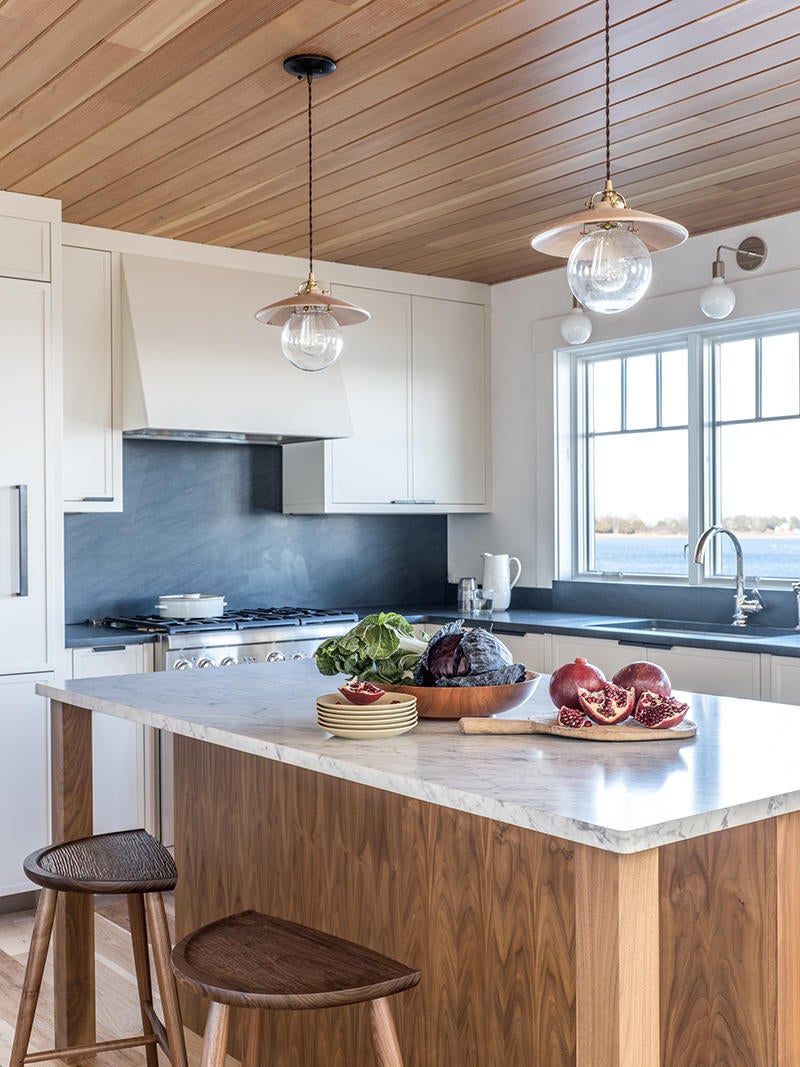
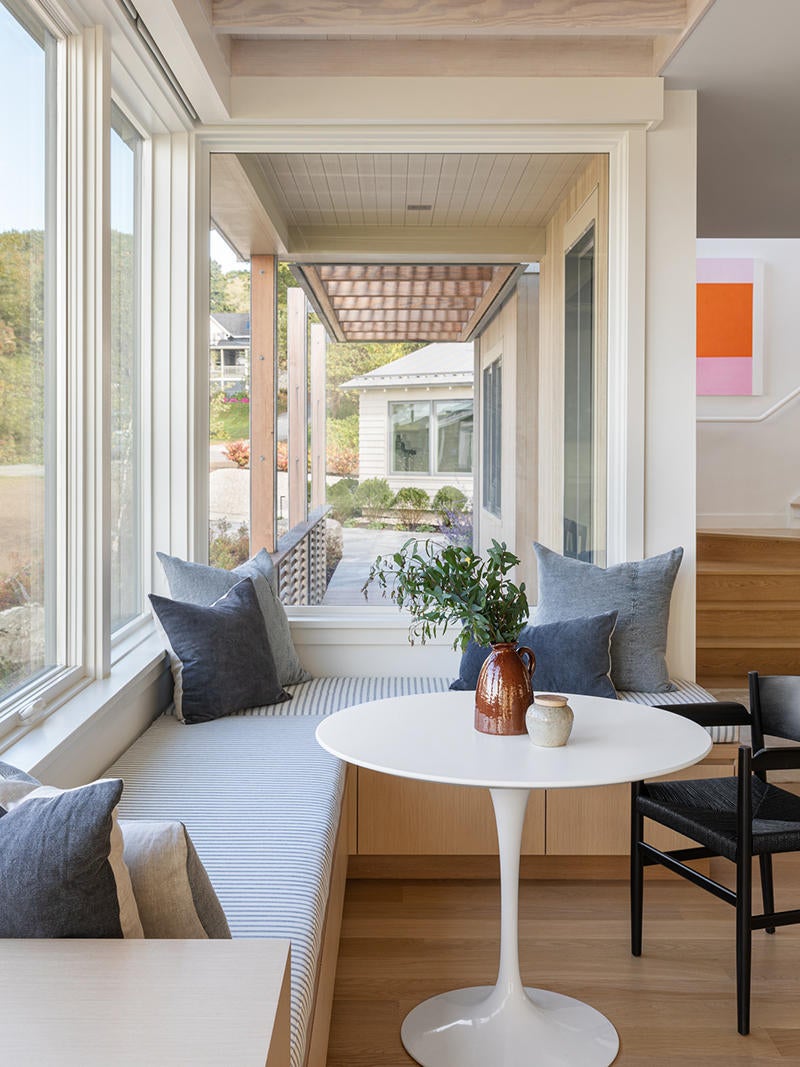
Who is assessing client fit and connection?
It’s either Katie or me. That’s always something we’ve held on to and feel passionate about. Katie has the best gut, and is such a good judge of character.
Can you tell me more about your working relationship? I think it’s so great to have that copilot in running a firm.
Honestly, I would be nowhere without her. She has been so important to building this business. She can see the global perspective, whereas I’m in the details and can get very overwhelmed by that. She’s like, “Whoa, Heidi, let’s zoom out for a moment.” We’re incredibly compatible that way.
We went to college together; we have the same education. She’s an art history major, and I’m a studio art major. We have this shared experience for so many years. Then she, of course, married my brother, and we have kids that are the same age, so we’re just moving forward on the same path in life. It’s so nice to have somebody like that in my life and to support this process, because it can feel so lonely when you start a business and you’re trying to answer all these questions. We’ve been able to have each other to work through that.
How did you decide who’s responsible for what?
It’s funny that you ask. In the beginning, we looked at each other and said, “We’re family, and this can get weird and complicated. But if we have a lane, and we stick to our lanes, and we feel good about our lanes, then it’s going to be OK.” That’s what we did. I am the creative person; she is operational—she deals with our taxes and talks to the accountant, and then she tells me the [pared-down] “Heidi version” of that.
But she still has such an amazing eye and knows me so well that she is really great at critiquing my work. So, if ever I’m stuck, she’s a great voice to come in and say, “What about this?” She’s able to dip in and out of that creative process in a way that’s really supportive. That’s how we defined things from the get-go, and I think honest and open communication throughout this process has been our guiding light. It’s really helped our relationship and the business.
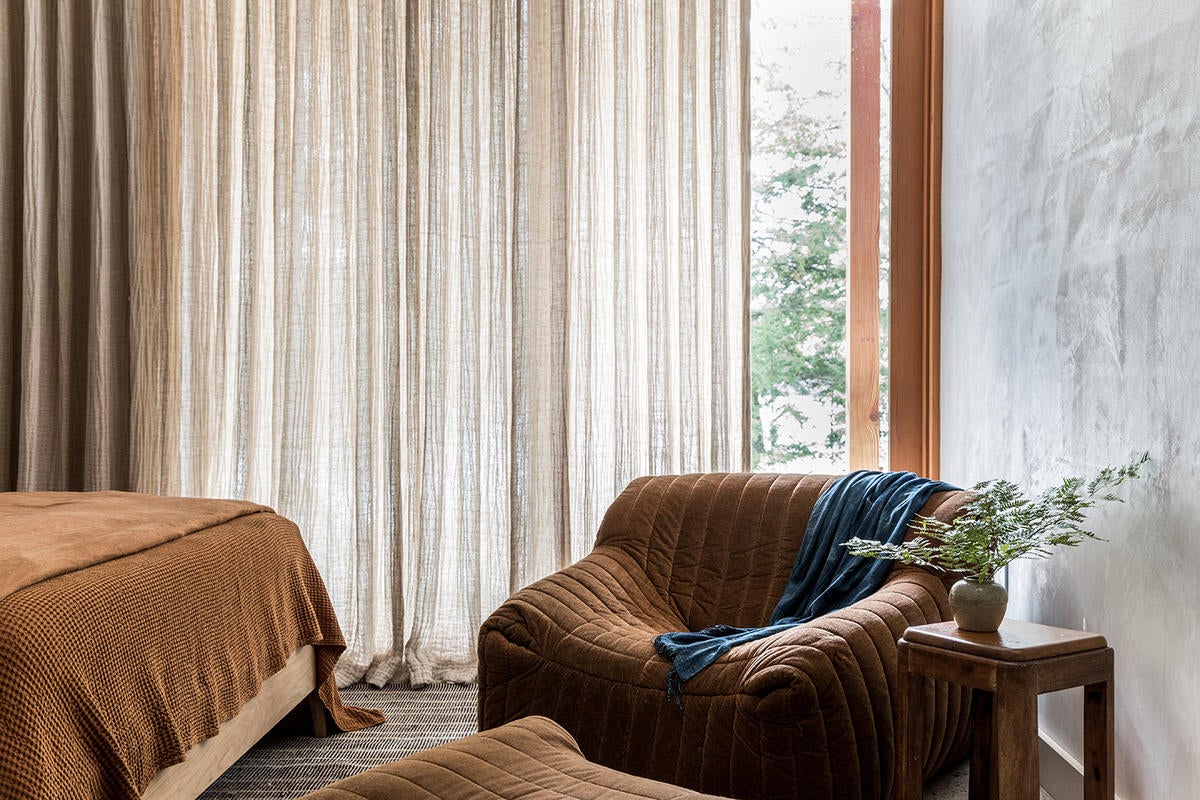
I wanted to ask you about billing and pricing. How have you approached that?
Every possible way you could think of. Initially, we were doing a flat rate because we felt like we were learning on the job and didn’t feel that was appropriate to charge our clients for. Did it probably take double the number of hours that we based our price off of? Absolutely. But we really believed in that philosophy in the beginning.
We have since changed to an hourly rate, and it’s working really well for us. Especially now that we’re working with architects from the onset of a project—from the client’s perspective, if they’re hiring the architect, landscape architect, interior designer, builder or contractor, the pricing structure is similar. That has helped us in the process. Also, with these new builds, you don’t know what you’re getting yourself into. So, we wanted to feel like we were protecting our time and feeling confident enough to charge for our time in a really accurate way.
What is the Maine market like? Can you tell me about the housing market and the design scene?
The housing market is absolutely insane right now.
Is that primary or secondary homes?
It’s both. Definitely. I can’t tell you how many times I’ve seen someone from New York, true Manhattanites, moving up here to their secondary homes and make it their full-time home. We have a lot of clients in that situation. Pre-pandemic, secondary homes were the driving force. Now, we are slowly starting to see people from Brooklyn and other [urban] areas move up here for lifestyle reasons and to raise kids. Since the pandemic, Maine has been inundated with people from out of state moving to make their secondary home their full-time home.
Does that change the work?
Yes and no. One thing you have to adopt is a summer/winter mentality—with these secondary homes, it’s unlikely that people are ever going to be spending winter up here. We always have our summer hats on when we’re designing those homes, and then we think about fabric, especially, in a different way [than] a year-round home. If somebody is only here in June, July, August, maybe September, it’s such a different experience than being here in January or February.
Because it’s freezing.
Yeah, and you’re like, “Oh, my God, is this ever going to go away?” Maybe you need a bouclé couch or velvet pillows to make yourself feel better in January—whereas we would not be putting those things in a summer home if they were really only here for those warmer months.
Where do you shop? What kind of resources are available to you locally?
We have a lot of very talented craftsmen, woodworkers, furniture makers, which is surprising—it’s very saturated for such a small area. What is not here that I think you see in California or New York are the Nickey Kehoe or Hollywood at Home–type stores that really focus on the trade. We don’t have a lot of that. Any of the artwork, custom pieces, art objects, we can get that locally, and it’s amazing. I think larger upholstered items, unique coffee tables, when we’re doing custom, we source a lot of that in California.
How do you present that option and talk to clients about custom work?
Our clients see the value in investing in a custom item if it’s an important piece for them. Often, we do custom dining tables because I think people consider that to be one of the most important pieces of furniture in their home. When they have that emotional weight tied to that specific piece, I think custom is always the preferred option. Within that, it’s more or less just what the project is asking for and what the client is asking for. Sometimes people want only custom, and sometimes they want a mix.
We’re also working with a furniture maker now named Adam Rogers—you’ve probably seen his work if you’re familiar with Radnor in New York. We met him through the coworking space that we initially had our office at. We are in the works of making a custom furniture line with him, and we’re really excited about that. I think this is filling Katie’s and my retail desires. We have a custom pillow line that we’re also working on. We’re excited to grow this side of our business, and it really feeds our interest and passions.
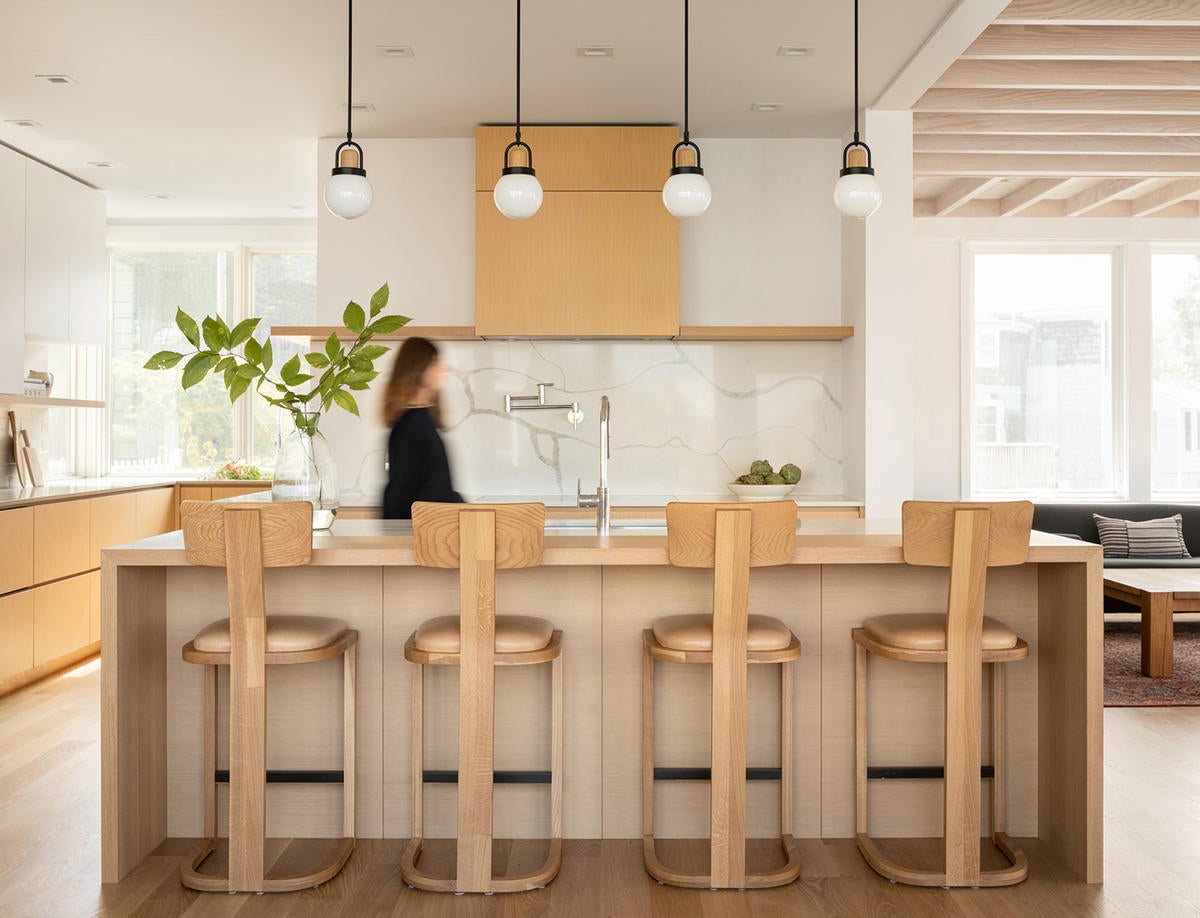
What’s the business model for that?
It’s still very much in the building-block phase. We have our pillows on our website under the “shop” tab, as well as our table that we designed. I think it’s something that’s going to grow and develop over time. Ideally, we’d have a separate e-commerce website, and our current office and studio is designed to be a showroom. That was the goal pre-COVID, and things have been a little bit on ice.
The hope is that we’d have this front environment for our prospective clients to walk into and say, “Wow, this is exactly what I want my home to feel like.” It’s a great way for us to continue to explore our aesthetic. Sometimes we don’t always have that full expression with a client, so it just provides a little more freedom to show to prospective clients and continue to push that idea. It’s another way for us to move the aesthetic forward.
How do you define or describe that aesthetic?
It’s called “camp.” In Maine, your second retreat home is called a camp, rather than a traditional camp where you go with a bunch of kids. It’s rooted in this real strong love for vintage and antique items, which I think goes back to these nostalgic things from my childhood that I really connect with. Camp is based loosely around that. People come to Maine to escape. They come here for nostalgic reasons, whether they were here for the summer as a kid or their family spent time up here. That’s really what it embodies.
You were talking about how everyone knows everyone in the Portland area. Is there a distinct design community around you?
There is. There are a lot of designers in Maine. So many. I feel like I’m always finding a new designer every day. Then when I think like, “Oh, this has got to be it,” there’s always someone new popping up, which is amazing, and I love that. I think design is—and I’m treating the design community like it’s a monolith, but it’s not, everybody is doing their own thing—but I think if you were to define two big categories, it’s the younger crowd and the older crowd, where it’s a little bit more traditional, coastal, nautical. When you think of Maine in a picture, that’s probably what you see—using more traditional fabrics in a traditional application. And then this younger crowd is mixing trends and styles and vintage and new and custom and box store.
Were there places to get together and connect pre-COVID? How does that community interact?
That’s a good question. As part of that initial networking that we were doing, we introduced ourselves to other designers and got to know them. So, we were able to meet a lot of people and have kept in touch since then.
You built your own community.
Right. I also think that, in general, people are really good about reaching out or posting on Instagram and saying, “This is an amazing room. It looks so beautiful. Love your work.” Everyone seems really supportive of one another. I think especially now, there’s so much work to be had, it’s not competitive. I mean, I’m sure there’s some of that. I don’t feel that, personally. But [there’s no] competitive [feeling that] there’s only two or three big-fish clients and we’re all fighting over them. I feel like people have really homed in on what they’re doing and what they’re about, and clients are attracted to that. I think things feel like they’re in a really good place in that respect.
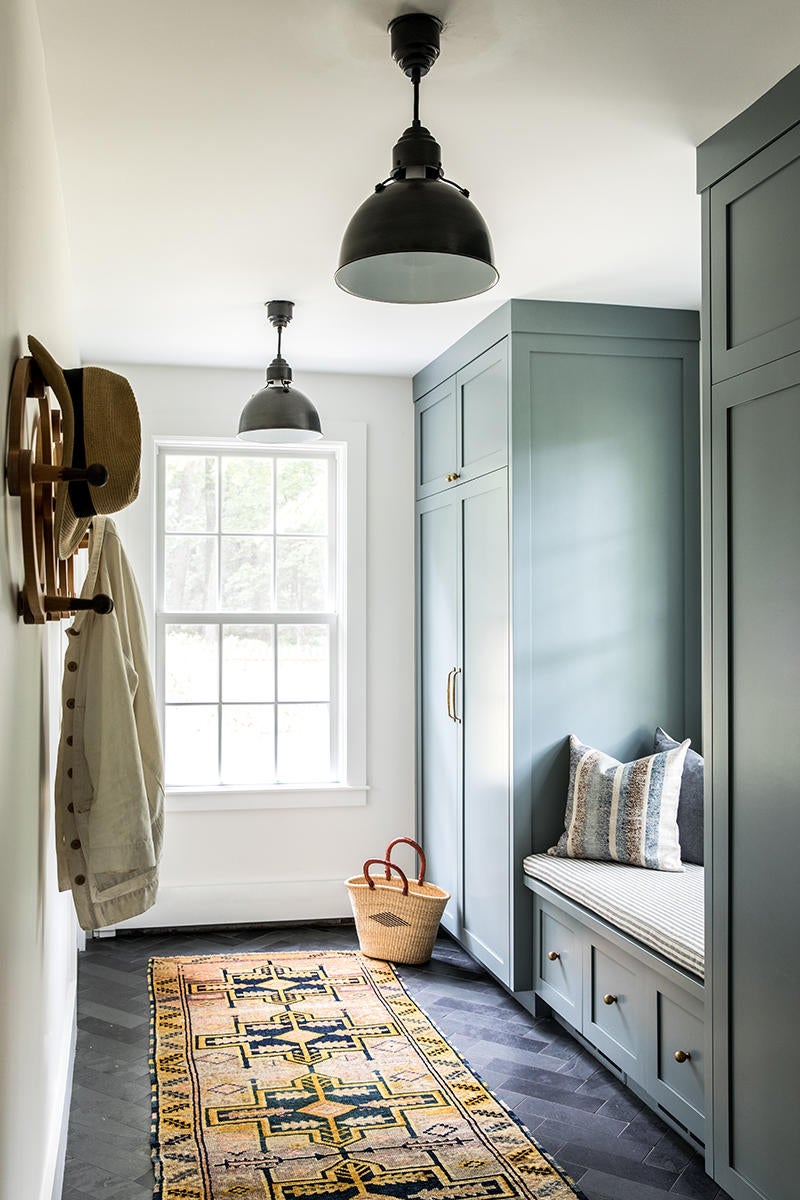
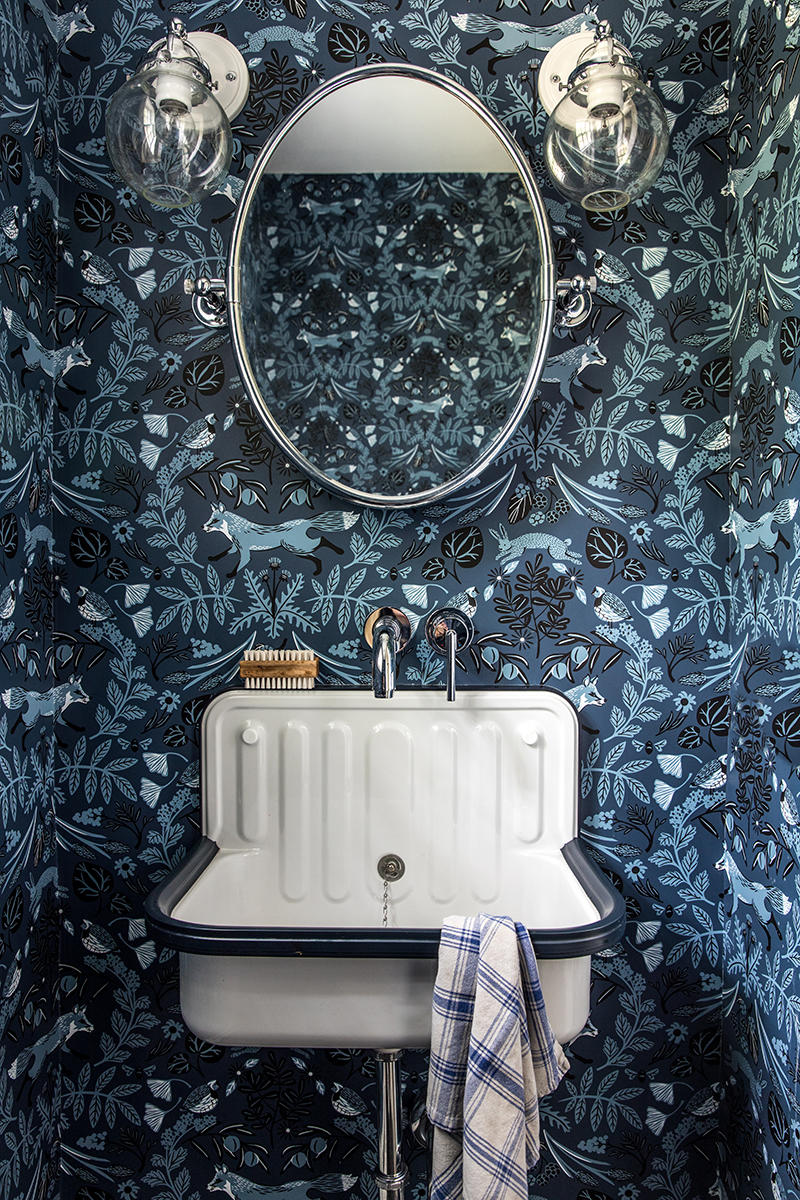
What is the biggest thing you wish you would have known from the start?
To continue to practice patience. I like instant gratification; I think a lot of people do. So, when you design something and you’re so excited about it and it takes two years to come to fruition, it’s hard. When I have to wait long for something that I designed, my self-confidence starts to [suffer and doubts] creep in: “Can I do this? Is this the right thing?” I think the longer you wait, the longer you question it. Then once you see those pieces come together, you’re like, “OK, this is good. Great. I knew this was great—it was just taking so long.” It all comes together eventually. I think it’s trusting the vision, feeling confident in yourself and [knowing] it’s OK to wait. You’ve got to be patient; it’s all going to come together.
That has to be even more important now with some of the delays the industry is experiencing. How do you navigate all of those challenges?
Knock on wood, we have been really lucky so far. It just so happened that we were installing a lot right before COVID, and then we were starting a handful of new-build projects in 2020 and really spent the whole year designing. We just ordered a significant amount of product this spring, so I haven’t really felt the dramatic effects of that yet. I know I’m going to feel it soon—and I know that this summer and this fall, which is when our installs are slated, it’s going to be a little bit of a letdown. But we have been spared for the most part up until recently, when our ordering and purchasing started to happen.
Are clients understanding when things like that shift?
Yes and no. Again, it goes back to that instant gratification. I think our clients want to see things come to fruition just as much as we do, and as soon as possible. I think that’s the hardest part of our job, that we are so reliant on so many people to do their jobs and commit to the finish line. I’ve never had a project go off without a hitch—not for lack of trying or having all my ducks in a row; it’s just that there are so many other people involved in this process that it comes with the territory. I think clients get disappointed, but it seems like more and more, and I think since COVID too, people are understanding that these things take time, and good things are worth waiting for. That’s our firm mantra that we’ve had to repeat over and over again.
What does success look like to you?
I am always the person [asking], “What’s next? What’s our next big thing? What are we working towards?” I’m trying to appreciate what I’ve achieved so far and celebrate that rather than always looking forward to something else, something beyond where we are. ... Where I am right now, raising two children and employing women, for me, feels successful. I’m really proud of what we’ve been able to do. I grew up in Maine, but I thought that I would never be able to find a creative job here. I’m so proud of the fact that I can offer a creative job to somebody that is like me and is yearning for that. I’m always up for something more, but I’m proud of the work we’ve done so far.
Homepage image: Heidi Lachapelle | Erin Little
















